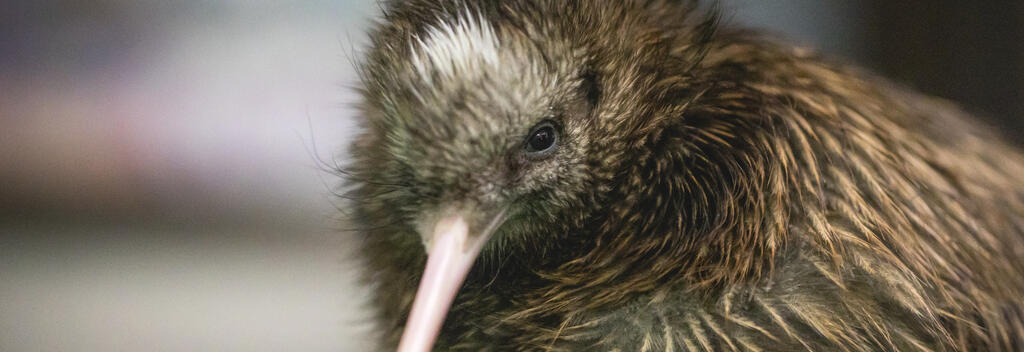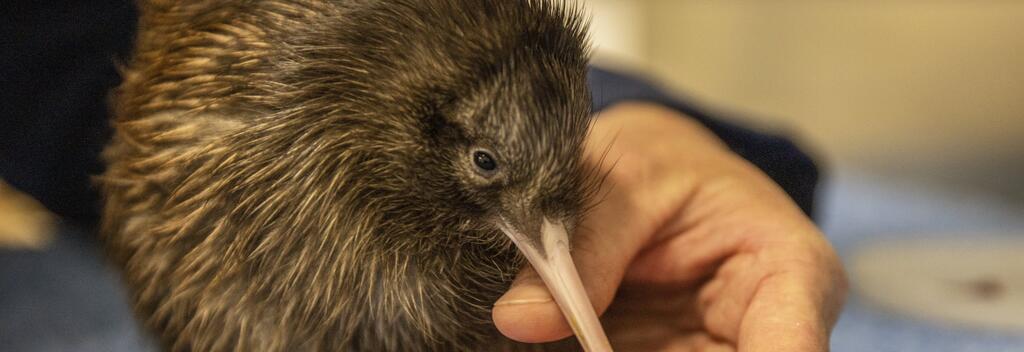-
Popular places to visit
Popular things to do
Helpful tips
Here's a few useful links to help with planning your trip to Aotearoa New Zealand.
-


The kiwi is a symbol of Aotearoa New Zealand and one of the world’s most unusual birds.
Super-sensitive beak, strong legs, and long whiskers – this flightless bird is perfectly adapted for life on the forest floor. These traits and others evolved in the absence of predators, making kiwi resemble mammals as much as birds.


Kiwi are unique among birds, having nostrils at the tips of their beaks, which helps them sniff out worms and insects beneath the soil. Their long beaks are perfect for digging out bugs, detected by tiny pits that sense the vibrations of moving prey underground.
With cat-like whiskers, fur-like plumage, and marrow-filled bones, kiwi share many characteristics with mammals. And with few native predators and an plenty of insects on the forest floor, kiwi evolved with wings that are too small for flight.
Unlike most nocturnal animals, kiwi can’t see very well. Instead, I they rely on their good sense of smell, hearing, and whiskers which help them feel their way around in the dark.
Kiwis are not your typical bird. They are sometimes called ‘honorary mammals’ because of their strange mammalian traits
Unlike most birds, kiwis have heavy bones filled with marrow. Their powerful legs make up a third of their body weight and allow them to run as fast as a human.
Kiwis also have highly developed senses of smell and touch, whereas most birds rely on sight as their primary sense. They are the only bird in the world to have nostrils at the end of their beak, which enables them to sniff out food in leaf litter and even beneath the soil.
Kiwis also have cat-like whiskers and shaggy plumage that is more like hair than feathers.
Kiwi birds also put a lot of energy into incubating eggs - it takes around 80 days for them to hatch. This is more than twice the typical length of time for birds, closer to the gestation period of small mammals.


Kiwi lay eggs as often as domestic hens, but kiwi eggs are six times bigger than eggs laid by most birds of their size.
The eggs aren’t incubated by females; instead, it’s a male kiwi that sits on the egg for up to 90 days – one of the longest egg incubation periods of any bird species. A chicken egg only takes 21 days before it hatches.
When the egg is ready to hatch, it will jiggle slightly. Unlike other birds, kiwi chicks lack an egg tooth, so they kick and peck their way out, a process that can take up to three days.
When they finally emerge, they are miniatures of their parents, with a thick coat of feathers, a strong beak, and open eyes. Within a very short period, they’re able to walk and forage for food.
The chicks are never fed by their parents. They hatch with a large external yolk sac that provides them with food for the first ten days of life. On the chick’s second trip out of the burrow, it finds its first meal – usually yummy leaf litter.


Kiwi are among the few bird species that live as monogamous couples. Partnerships can last over 20 years, with pairs coming together every third day to share a burrow and call to each other. However, “divorces” do occur, particularly in areas where there are lots of other kiwi around or if the pair fail to breed.


Only 5% of kiwi chicks in the wild survive into adulthood. During their first three to four weeks of life, kiwi chicks feed mostly at night, making them vulnerable to predators – particularly cats and stoats. All dogs are also a significant threat, often killing or maiming adult kiwi. Unfortunately, kiwi populations are declining. Hatcheries, sanctuaries, and pest-control initiatives are helping to retore kiwi populations, but more work is needed. The Department of Conservation aims to increase kiwi numbers by 2% each year across all species, aiming for 100,000 kiwi by 2030. For information on how you can help, visit the Department of Conservation(opens in new window).


The brown kiwi, found in the North Island, is one of the most common kiwi species and can be seen at the National Kiwi Hatchery in Rotorua. The little spotted kiwi, the smallest species, is found on offshore islands or in bird sanctuaries, with Kāpiti Island being a prime spot for sightings. The great spotted kiwi is located in the southwest of the South Island. The rarest species, the rowi, with only around 450 birds, is found in Ōkārito forest on the West Coast of the South Island and can be seen at the West Coast Wildlife Centre or on guided tours. The tokoeka, found on Stewart Island, Fiordland National Park, and the Haast ranges, is unique for its daytime activity, making it easier to spot on kiwi tours.